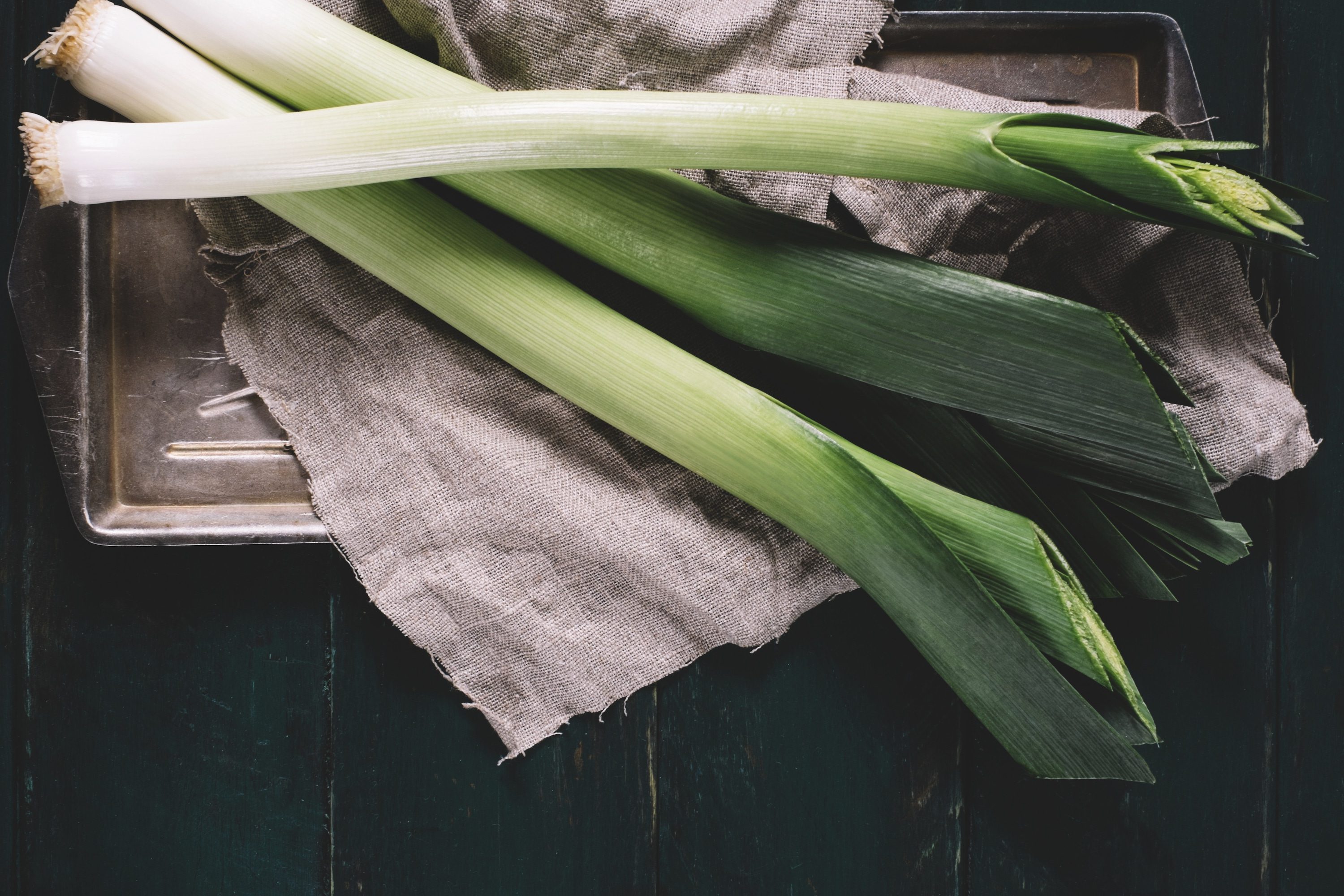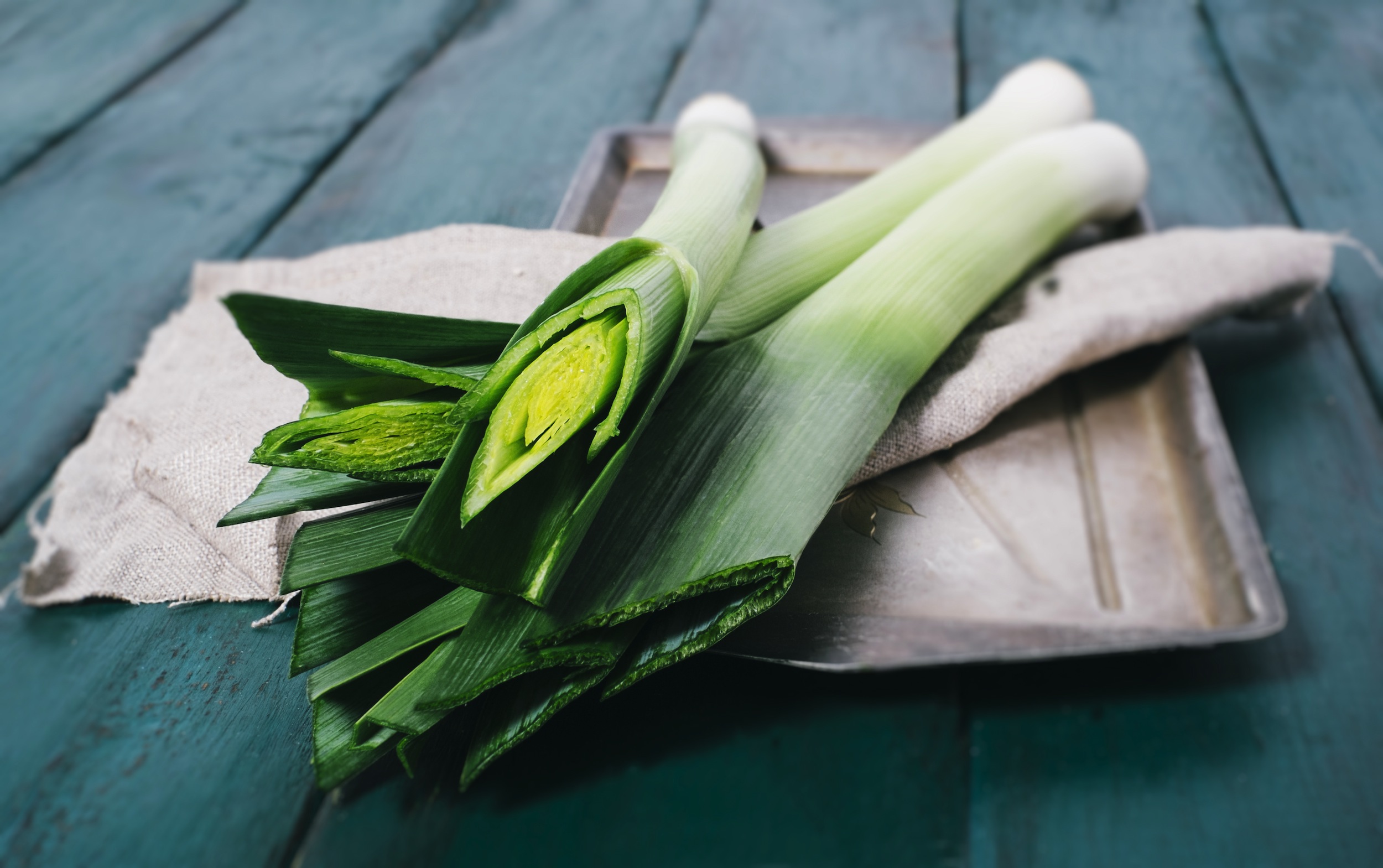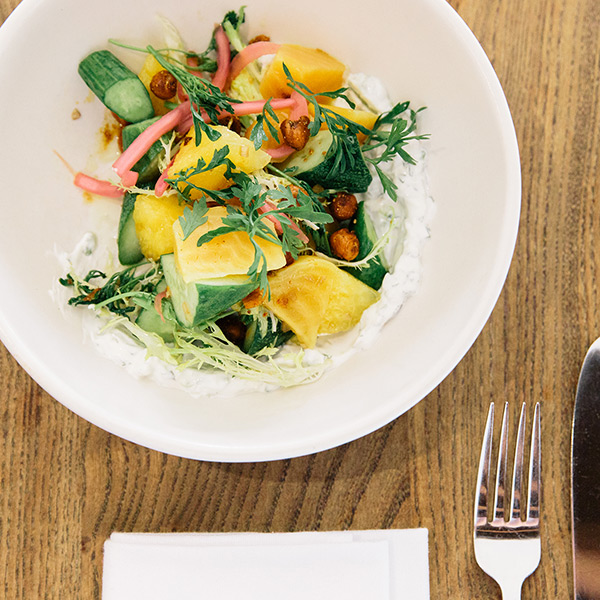If you turn a leek with its hairy end up, it looks sort of like a crown or the top of a scepter, which may be one reason this delicious allium (a member of the onion & garlic family) is called the “king of the soup onion.” It could also be because Emperor Nero is said to have eaten leeks every day to make his voice stronger. But the real reason comes from the flavor, and if you’ve ever cooked with them you know why. Leeks have a milder flavor than most onions this time of year, as yellow and red storage onions tend to have high concentrations of sulfuric compounds like pyruvic acid, which helps make these onions good keepers and good for you as well. However, the subtle flavor of leeks is complimentary to many recipes because they do not overpower the other ingredients in the dish.
Late spring and early summer leeks tend to be smaller and have a mild, delicate flavor. The leeks you’ll find now can be up to 2” in diameter with a stronger flavor. Though stronger, they are still a preferred allium flavor for many dishes.
Fresh leeks will keep for between one and two weeks if they are stored unwashed and untrimmed in the refrigerator.
Do you refrain from eating this wonderful allium because of its knack for holding onto the soil it’s grown in? Refrain no more!
How to Cook with Leeks
Cut the leek lengthwise to just before the green fan and open the stalk halves under cold running water. Open each section with your fingers allowing the water to run through, rinsing all of the unwanted sand and dirt away. Use this simple technique to get the dirt out and let the cooking begin. Many cooks use the leek stalk but discard the green leaf or fan part. This is a big mistake. Why? Because the oft-discarded leaves are actually more nutritious than the tender stalk. And who wants to waste food anyway? Try using the greens like you would scallions — finely chopped in sauces and salads – to get the most from this versatile vegetable. I think you will be surprised at what a nice addition they are to many recipes.
Packed with Nutrients
This is one nutritious vegetable. Leeks are high in the minerals potassium, calcium, iron, and phosphorus as well as vitamins A, B1, B2, the often overlooked B vitamin folate (great for cardiovascular health) and C. These benefits make them a healthy addition to any meal. Leeks also contain sulfur, which has been found to have natural antibiotic qualities.
To get the most nutritional benefits from your leeks let them sit for at least 5 minutes after you’ve cut them.

“I beseech you heartily, scurvy, lousy knave, at my desires, and my requests, and my petitions, to eat, look you, this leek: because, look you, you do not love it, nor your affections and your appetites and your digestion does not agree with it, I would desire you to eat it….if you can mock a leek, you can eat a leek.” – William Shakespeare, ‘King Henry V’
Originally posted 2017-03-06 13:01:30.








Thanksamundo for the post.Really thank you! Awesome.